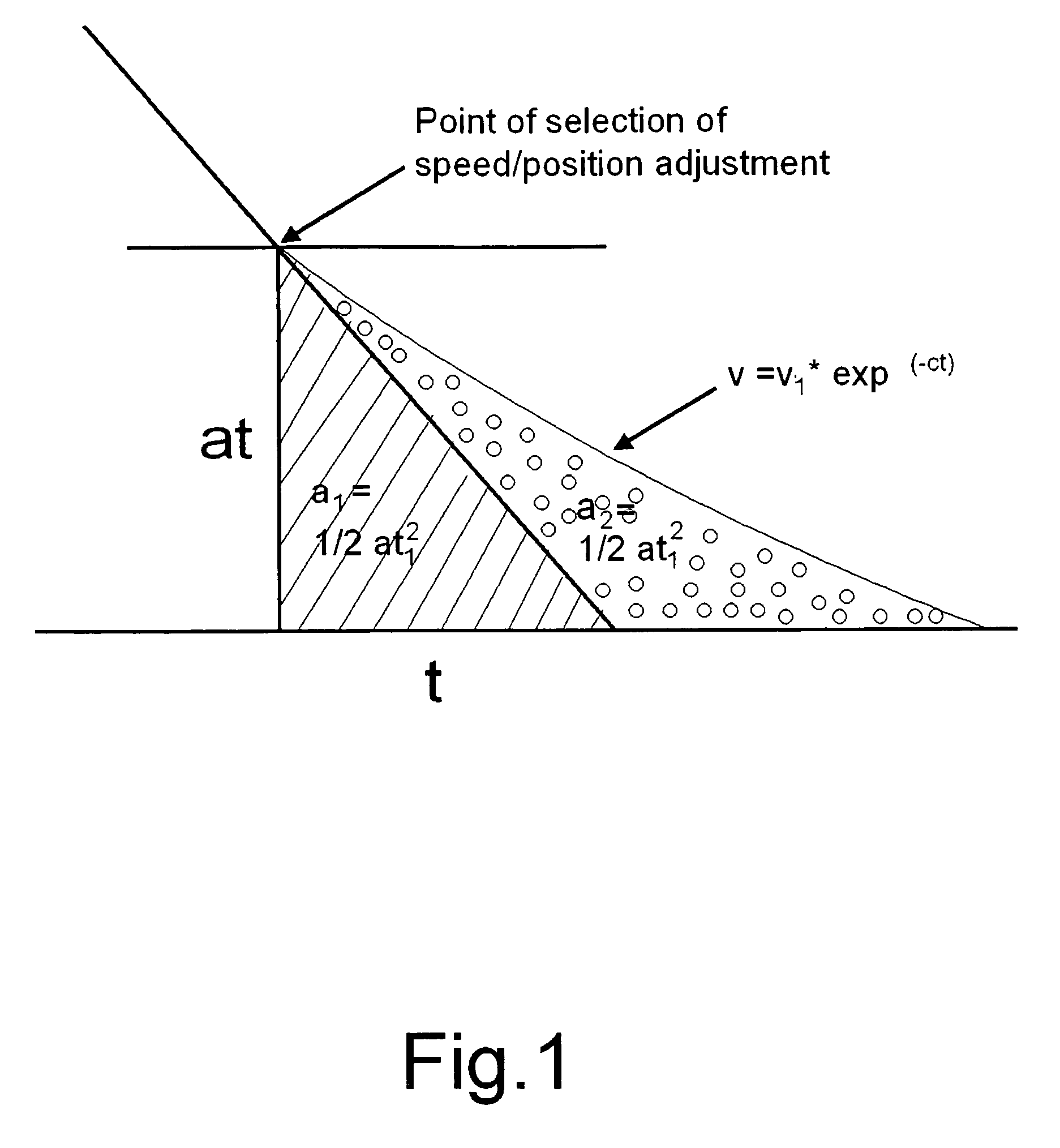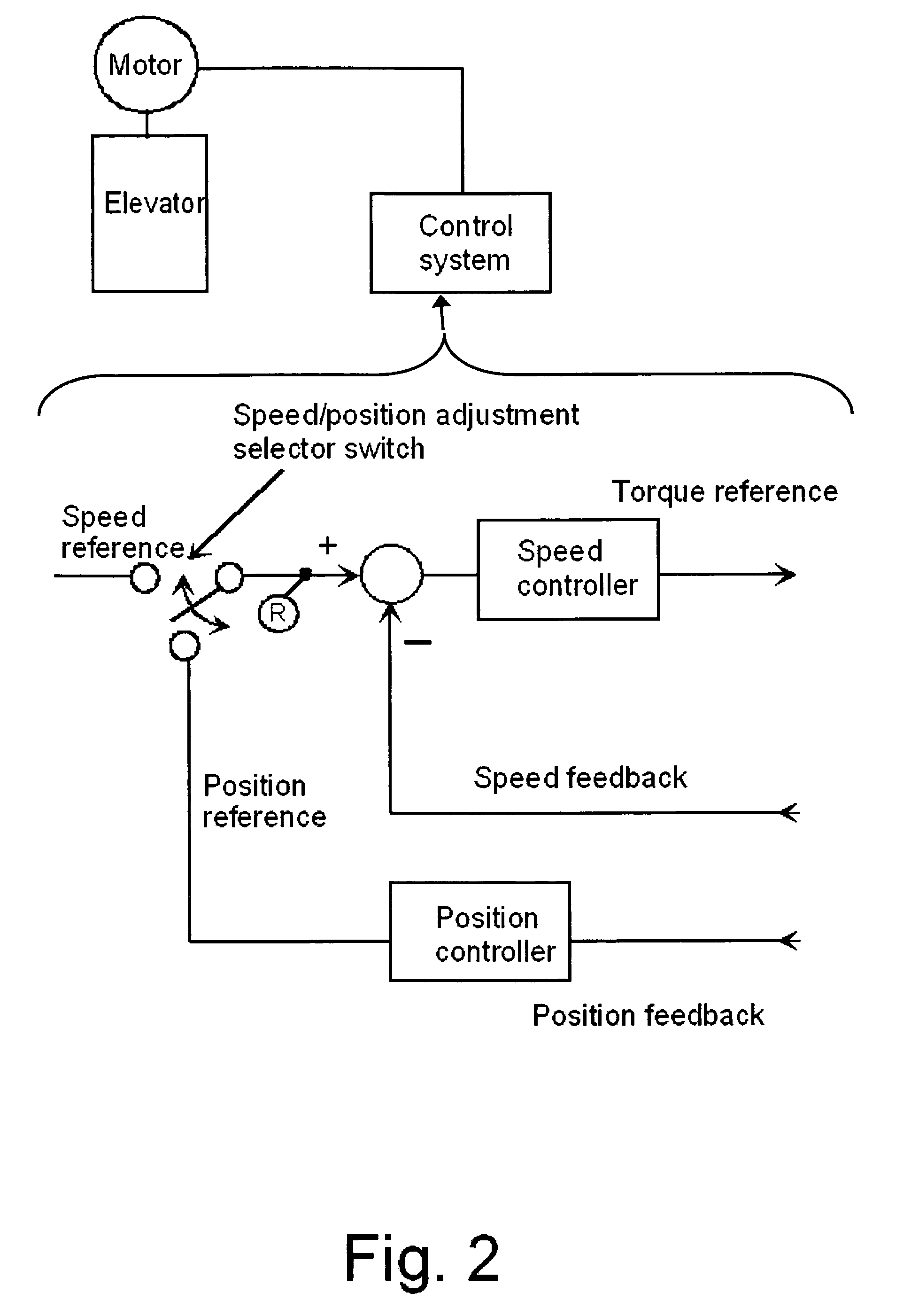Elevator control using switched speed and position
a technology of switching speed and position, applied in the direction of computer control, instruments, electrical apparatus, etc., can solve the problems of difficult speed reference, difficult application, and complicated publication, and achieve the effect of simple implementation
- Summary
- Abstract
- Description
- Claims
- Application Information
AI Technical Summary
Benefits of technology
Problems solved by technology
Method used
Image
Examples
Embodiment Construction
[0019]According to FIG. 1, in normal operation the elevator travel curve comprises an initial acceleration, a constant acceleration stage, a constant velocity portion, a constant deceleration stage and a final deceleration. At the deceleration stage, the elevator's velocity is reduced with a constant deceleration, which is represented by portion va of the speed curve in FIG. 1. At the constant deceleration stage, as is well known, equation v1=a*t1, where a is deceleration and t is time, applies for velocity, and equation s1=½*a*t12 applies for distance. In other words, when the elevator comes with constant deceleration to a halt, it travels through a distance of s1=½*a*t12 in time t1. If a final rounding is added to the speed curve at the end of the deceleration stage, in which case the change in deceleration, i.e. the jerk is constant, and a jerk value is chosen such that the stopping distance is doubled, i.e. s2=2*s1=a*t12, then the velocity can be resolved. For example, if the ve...
PUM
 Login to View More
Login to View More Abstract
Description
Claims
Application Information
 Login to View More
Login to View More - R&D
- Intellectual Property
- Life Sciences
- Materials
- Tech Scout
- Unparalleled Data Quality
- Higher Quality Content
- 60% Fewer Hallucinations
Browse by: Latest US Patents, China's latest patents, Technical Efficacy Thesaurus, Application Domain, Technology Topic, Popular Technical Reports.
© 2025 PatSnap. All rights reserved.Legal|Privacy policy|Modern Slavery Act Transparency Statement|Sitemap|About US| Contact US: help@patsnap.com



